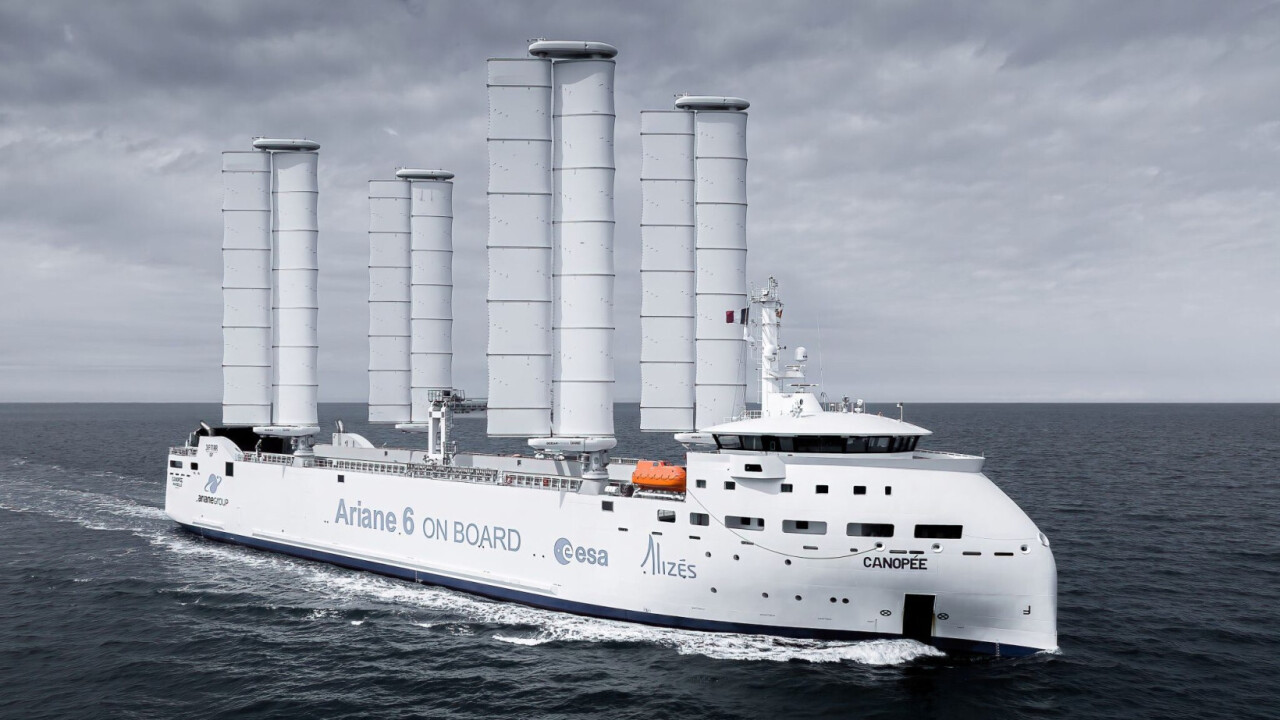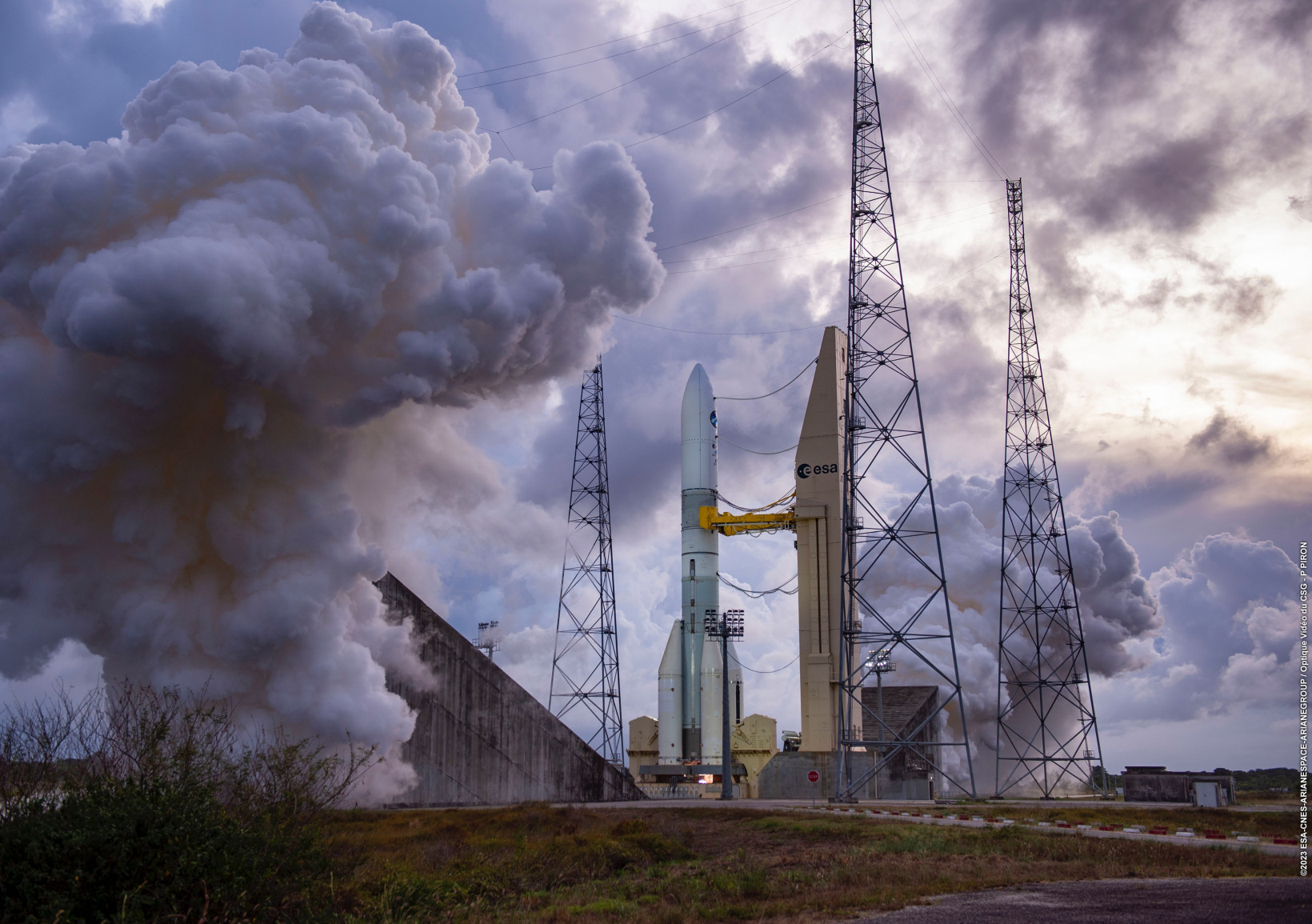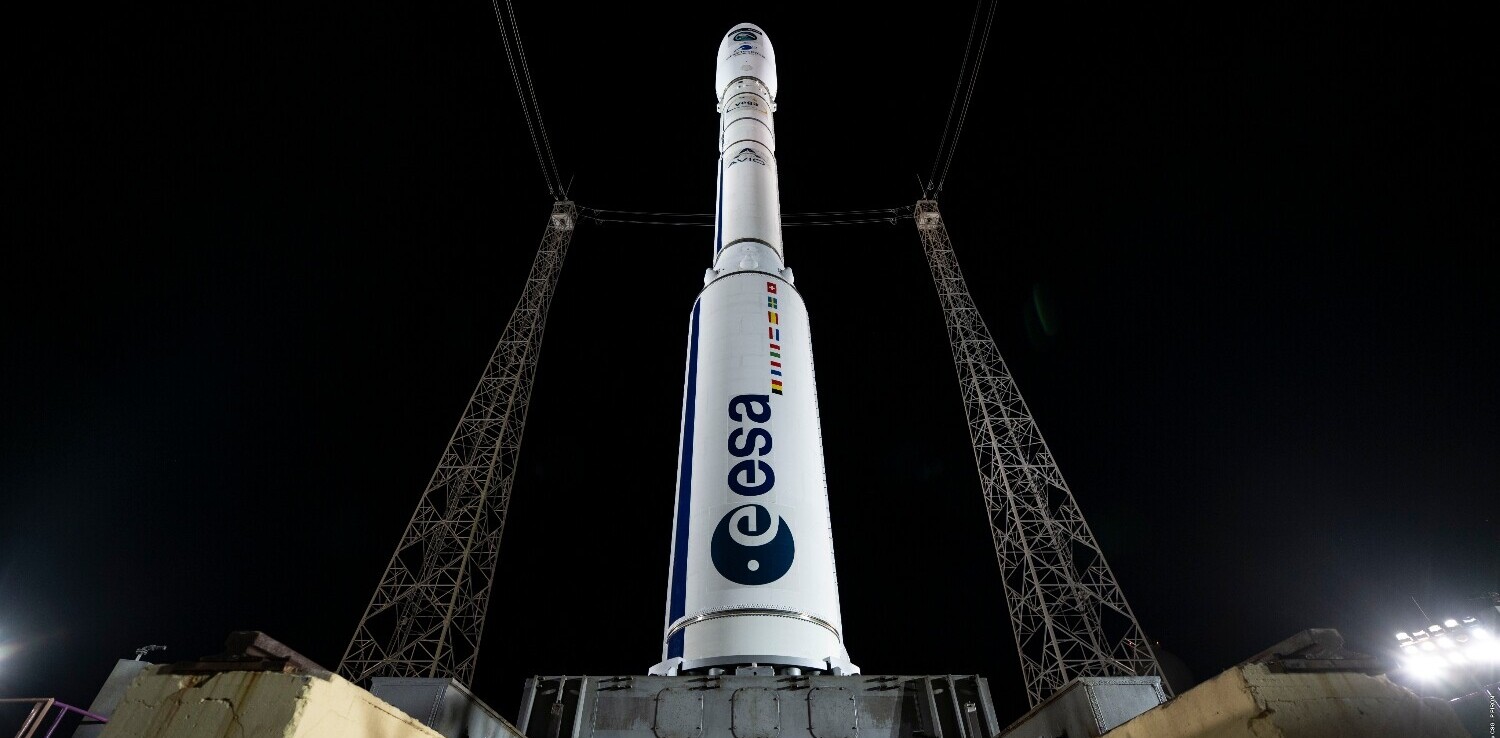
After numerous setbacks, the European Space Agency recently announced that its next-generation rocket, Ariane 6, is set to launch in just six months’ time. If successful, the heavy-lift launcher will restore the continent’s independent access to space satellites.
Now, various parts of the rocket, built in factories across Europe, need to be transported across the Atlantic Ocean to be assembled at ESA’s spaceport in French Guiana. This oversea territory is — for now — home to Europe’s only active spaceport.
To tackle the task, ArianeGroup, which is behind the rocket, commissioned the construction of a custom-built vessel called Canopée. The company claims it is the world’s first hybrid industrial cargo ship powered by wind.
Six years in the making, the vessel has four massive “Oceanwings” that assist the diesel engines when in motion, cutting fuel consumption by around 30%.
The invention of French startup AYRO, these fully retractable sails stretch 37 metres high and 11 metres wide. They automatically adjust based on wind conditions, maximising thrust.
Made from a cloth-like material, the wings have undergone extensive testing over the past two years. But the sails were really put through their paces in November when Canopée completed its first transatlantic voyage carrying parts of the Ariane 6 rocket.

Capable of hauling 5,000 tonnes at 16.5 knots (30.5 kph), Canopée is now back in Europe readying for its next trip. The cargo vessel will be making a dozen such voyages each year between the ports of Bremen, Rotterdam, Le Havre, Bordeaux, and Kourou in French Guiana. Its solely purpose is to transport the Ariane 6 and its replacement parts not just before launch but throughout its life.
The successful combination of diesel propulsion and wind assistance on a cargo ship of this size (121 m long and 22 m wide) is a promising step forward in the decarbonisation of industrial shipping. Globally, shipping accounts for 3% of greenhouse gas emissions — more than the entire aviation industry.
But the sector is notoriously hard to decarbonise. This is because most cargo ships today are built to run on diesel fuel, and alternatives like hydrogen or batteries are not yet viable for the distances these vessels must travel.
Up to 90% of goods are carried by ship and demand is rising. This means that the climate impact of shipping will only grow in the future unless cleaner fuels or zero-emission technologies emerge as suitable alternatives.

Alongside synthetic fuels like ammonia, harnessing wind power is one of the few ways to clean up the shipping sector right now. One of the biggest advantages is that sails can be retrofitted to existing ships — negating the need to build new ones.
AYRO is by no means the only ones looking to cash in on wind-propelled shipping tech. British company BAR Technologies has also designed giant sails it calls WindWings. The technology was fitted to the cargo ship Pyxis Ocean which conducted a successful test-run en route from China to Brazil in August.
Elsewhere, Swedish company Oceanbird began construction on a set of 40-metre high, 200 metric-ton sails earlier this year to be retrofitted on the 14-year-old car carrier, Wallenius Tirranna. While Airbus spin-off Airseas has developed a giant kite that pulls vessels along, again with the aim to cut fuel consumption and thus emissions.
Get the TNW newsletter
Get the most important tech news in your inbox each week.




